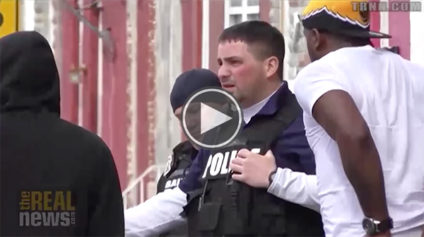
Austin police cruiser.
A newly released study on policing equity in Austin, Texas revealed stark racial disparities in the rates at which African-Americans are stopped by police and/or experience use of force.
According to the report by the Center for Policing Equity, Austin police officers use force on Black suspects at significantly higher rates than they do white and Latino suspects combined. African-Americans make up just 8 percent of Austin’s population, however.
The report also revealed that African-American drivers were more likely to be searched (32 percent) than white (14 percent) and Latino drivers (16 percent).
USA Today reports the study is unique in that Austin police officials agreed to release the study results to the public before they were known — a move they hope will be an example to other cities on how to improve relations between police departments and the communities they serve.
“While this is the beginning of this process in Austin, it is also the beginning of a process nationwide,” said Phillip Atiba Goff, president and co-founder of the Center for Policing Equity.
Controlling for factors like crime rates, education and income levels, the study examined data from 2014 and 2015 to uncover racial disparities in policing across Austin. City Police Chief Art Acevedo called the report a first step in the ongoing partnership between the Austin Police Department and Center for Policing Equity.
“We’re a department also that takes use of force, response to resistance, very seriously,” Acevedo told The Guardian. “I think what it tells me is that we still have more work to do. We have to continue to work in terms of our training on implicit and explicit bias for our department.”
The police chief said impartial policing specialist Dr. Lorie Fridell is there to provide more training to his officers in the area of racial bias prevention. Acevedo also said his department will continue to work on their de-escalation techniques and relationship with the community.
While the report highlighted racial bias in Austin’s policing practices, it noted that searches left to officer discretion were highly effective and returned contraband roughly 48 percent of the time. It also discussed racial disparities in the decision to stop and search a suspect.
“A model of the decision to search revealed that Blacks and Hispanics, once stopped, were more likely to be searched than would be indicated by their representation among those stopped,” the report read. “We encourage the APD to continue monitoring these issues and to collect data on all its vehicle stops to assess the equity of officer behavior even more accurately.”
According to Austin’s KVUE, the next step in this equity policing research process is to conduct and analyze community and police officer surveys. However, the program is funded through grants and doesn’t have the money to do so just yet.
Acevedo said he hopes other departments across the nation will follow his lead by releasing similar data on its policing practices.
“The more departments that do these things – the more departments that collect data, that actually are committed to transparency – when communities see the profession willing to be committed to transparency, the community knows that’s the first step to building legitimacy,” he said.


